| Now, the minor problem I had to work around was that the location in which the cache would be located was exactly 49mm's wide, and not a hint more. Absolutely refusing to go with a film-canister type hide... I opted for PVC. Luckly, the size of PVC that would closest fit was exactly 48mm's diameter. This gave me exactly 1mm to work with. No attachments that would allow me a screw-on lid would work, as those would make it a lot wider... so I had to be inventive. My original plan was to have a hinge-based, weather-stripping-sealed, latching system. This was quickly discarded after I had a revelation about how to make it signficantly better... as you'll see below. Hence, disregard the weather-stripping and brass hardware. |
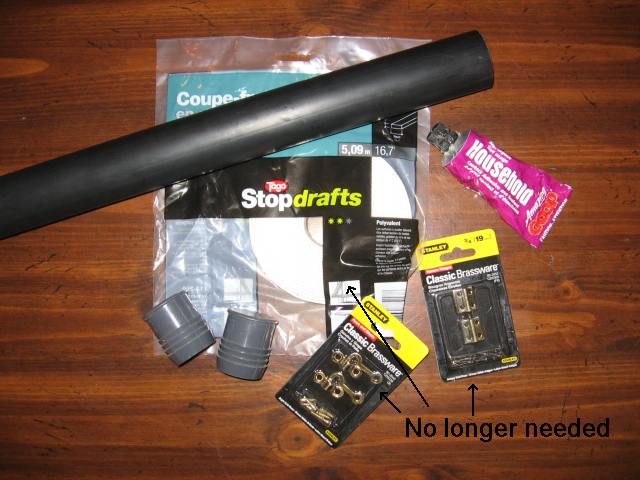 |
| But... that aside, let's get down to the building part. First... since the PVC only comes in... whatever length it was originally (something ridiculously too long, anyway), let's hack it down a bit. I actually made the base of several of them, ranging from 20cm's to 25cm's. I actually got a bit of help from a vice-grip, so that I could cut it as straight as I could. The result was fairly acceptable... no more than 1/2 mm inconsistancy at any given point. |
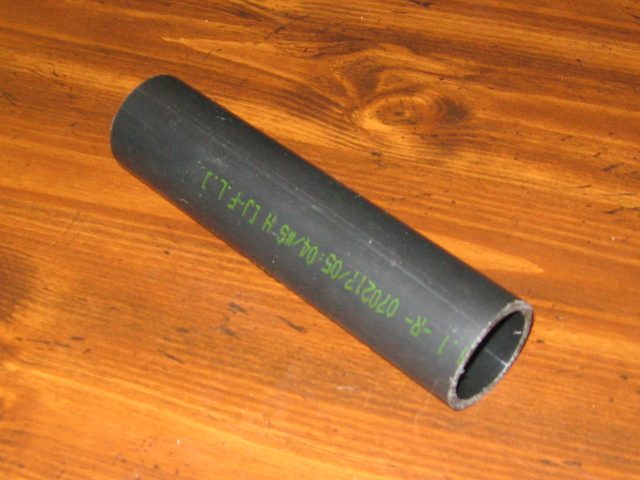 |
| Remember those plugs from the first picture? Since the only ones I could find were metric, and the pipe was imperial... I had to file down the ribbing on the plug. Now... the ORIGINAL plan would have been to hammer it in and cut part of it off to use as a hatch-type door. I changed it to use the plug itself as part of the plan. So I cut off about 2.5cm piece of the pipe, slathered the top part of the plug with glue to make sure it's both sealed and won't move (although, given how hard I had to hammer it, there's no way it's coming out regardless), and hammered it through. The result... a PVC plugged end. Now... to make it slide easily into the body of the cache, as well as seal. |
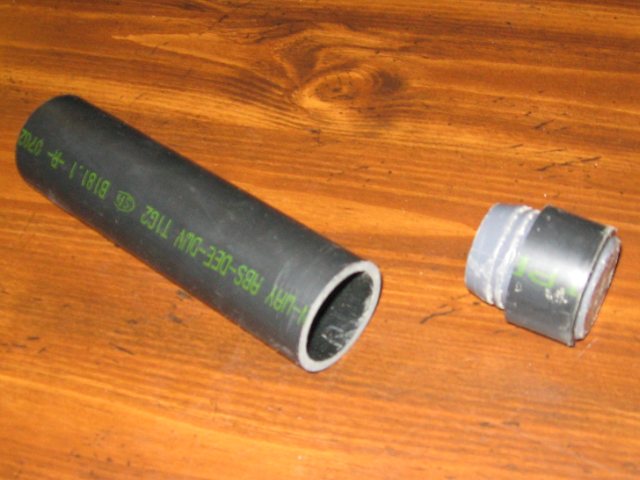 |
| Now... how to hold the lid tightly in place, while at the same time not taking up a lot of space. Why hello there, spare inner-tube! You gave your life valiantly in the name of geocaching. So... with a section of that removed, I cut an approximately 1.5cm wide strip off the section, and will have that both psycho-glued, screwed (with small screws), and afterwards tightly electrical-taped down. I still shouldn't exceed my width (given it's only on one plane that must be less than 49mm's, the other plane... ie: the one that will contain the magnets and this strap... can be slightly larger), so all should be good. If worse comes to worst, I can change it somehow or another... but this will do for the time being. |
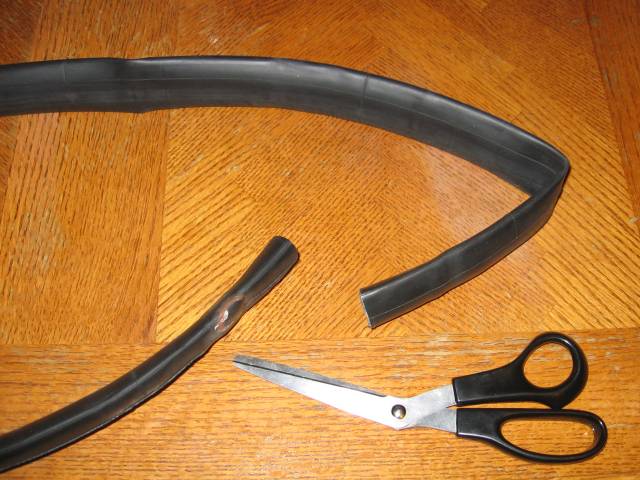 |
| After a little bit of size testing, a suitable length is found. Long enough to allow it to be pulled out to release the lid, but short enough to hold the lid on tight. Hopefully. I as well added three screws onto either side (clipped off after running them through the PVC, to avoid sharp edges on the inside), since the repeated stretching of rubber on glue would cause the glue seal to break easily. Therefore, these should hold it in place, where it's also glued down as well. Can't go wrong with added precautions. |
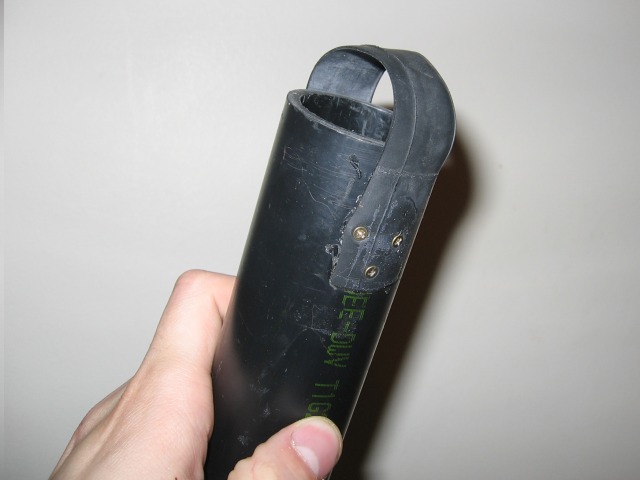 |
| And here we see it in it's complete form. Now what I've done is glued four magnets to the side of it, and placed an O-ring for added sealing between the lid and container. After that was said and done, I wrapped the entire container tightly in electrical tape, to both cover the magnets, text on the side of the PVC, and keep the magnets from pulling off with the repeated removal from its hiding spot. It also is added stability for the rubber strap, to keep it from pulling off of the heads of the screws. The rubber strap is ALSO held in place with a tightly pulled wrap-tie (which BARELY fits into the space allowed), just as added support for it's repeated stretchings. It may be crude... but given my millimeter of available room to play, not bad considering. It will hopefully hold for a long time, and should it fail I'll contrive another method. |
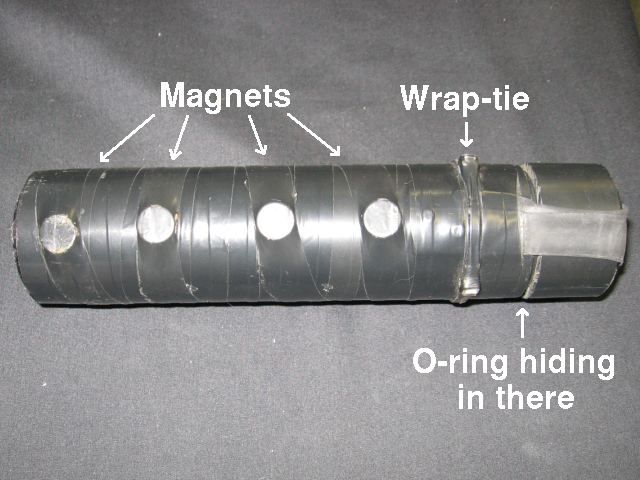 |
| And here of course, we can see in the cache's natural habitat... that it's completely absent, and nowhere to be seen. This would be a picture of it after it has been stolen. Odds are, some punk thief saw another cacher find it and went and stole it after they left... or just stumbled upon it accidentally and stole it. The point of course... is that said lowlife stole it for no reason. Now... albeit I was prepared for this eventuality, given that it's in a heavy-traffic (both pedestrian and vehicular) area of town, with kids not specifically known for their good behaviour... it's still a bit of a disappointment. However, when I was making the first cache, I had enough supplies to create a second... which was about 80% done already at home. |
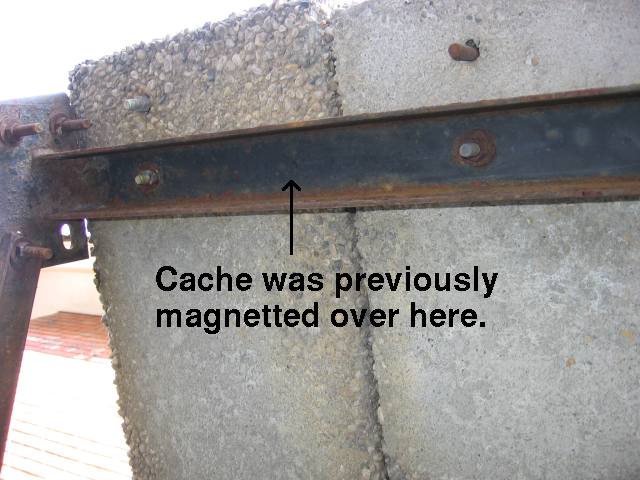 |
| About one hour of work later, the second cache comes into existance. It's slightly shorter (by choice), and I made the elastic a bit thinner at the top to make it easier to stretch. As well, I only used two screws due to space, and that the wrap-tie will be doing most of the work anyway. The lid on this one actually fits better than with the first cache, so that's an added bonus, and should keep moisture out. The magnets are slightly closer together due to it's shorter nature, but that's not a problem. It still has the same sticking power to metal (tested on the fridge). |
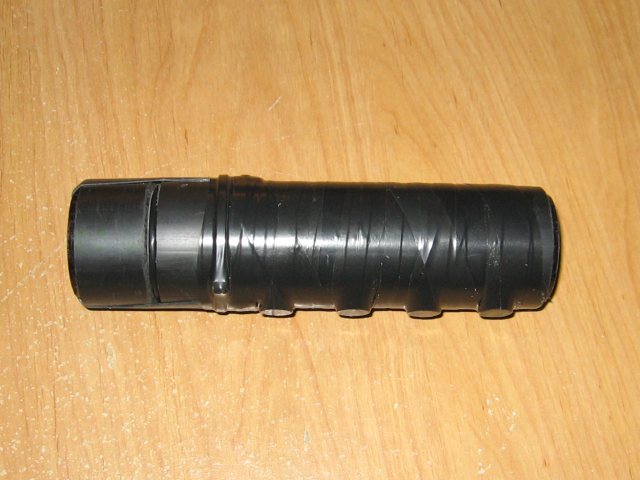 |
| And here it is in it's NEW habitat. It's about 3 feet further south, due to me placing it as close to the building's wall as possible. Originally, it was as close as possible to the outside of the stairs, to make it easy to grab. This turned out to be a poor location choice, it would appear. As well, I've magnetted it to the side of the angle-iron, instead of onto the inside. In retrospect, doing it this way gives me a lot more freedom for space, but I rather like how the design of this one turned out regardless. Besides, if it had a screw-on lid, I'd STILL have to make massive modifications in order to have the magnets reach out far enough that the lid doesn't get in the way. So in actuality... the size problem still exists, but gives me a little bit more leeway. And if THIS one is also stolen... I'll either make a smaller, flat one out of something entirely different, or abandon the location altogether. |
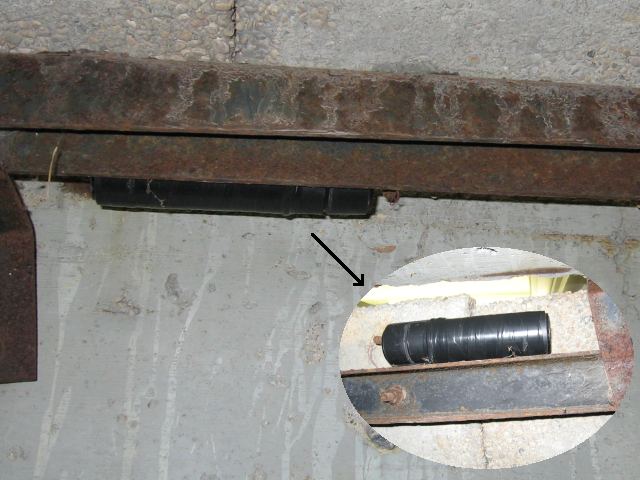 |









